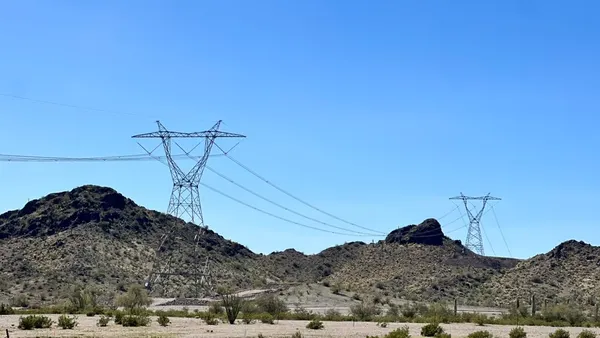Dive Brief:
- A report jointly produced by the Rocky Mountain Institute (RMI), America's Power Plan (APP) and Advanced Energy Economy Institute, examines 10 business model reform options utilities may consider as they modernize their grids and respond to new regulatory directives and customer preferences for clean energy.
- The 10 options range from revenue decoupling to performance-incentive mechanisms and other concepts, some of which have already been proposed. The report also includes a set of case studies of utility business model reforms.
- The report says it aims to educate "practitioners of reform," which today includes a wide range of utility stakeholders. The companies must be "intrinsically motivated," said Mike O'Boyle, director of APP.
Dive Insight:
There have been previous periods of utility reform, the report points out, such as deregulation and market restructuring, but what is occurring today is different. "Many of the current issues bring new challenges for which there is not a ready playbook," the report notes, adding the technology underpinning much of the change is entirely new.
RMI describes the report, Navigating Utility Business Model Reform: A Practical Guide to Regulatory Design, as a "menu of regulatory options for policymakers, utilities and electric customers."
The largest segment of reform options includes modifying the traditional cost-of-service model, with four alternatives identified: revenue decoupling, multi-year rate plans, shared savings mechanisms and performance incentive mechanisms.
Other options include:
- Changes to the treatment of capital expenditures and operational expenditures, to make utilities "indifferent between capital or operational solutions;"
- New procurement practices to provide the most cost-effective combination of supply- and demand-side resources;
- New value-added services provided by utilities, which would allow them to earn new revenues;
- Accelerated depreciation to reduce stranded costs for utilities and customers when assets are retired early;
- Allow utilities to earn new revenues by acting as a platform provider, integrating and coordinating
third-party energy services; and - Securitization changes that would allow utilities to refinance uneconomic assets by creating a debt security or bond.
While the electric grid is rapidly changing, electric utilities "have a fundamental role" in ensuring the period of change results in better resilience and cleaner energy systems, RMI manager Dan Cross-Call said in a statement.
Cross-Call said the report "offers a practical guide to industry leaders ... on how to best engage with an increasingly decarbonized and distributed energy system, shepherding and managing this transition to maintain the fundamental role of utilities and achieve new policy objectives."
Many of the options discussed are already being tested. Hawaii is moving to implement performance-based regulation by 2020, looking to break the link between utility revenues and capital investments. Minnesota is also looking toward performance-based ideas. Utilities in New York have been focused on facilitating third-parties providing energy services, and the transition to a platform provider-based business model.













